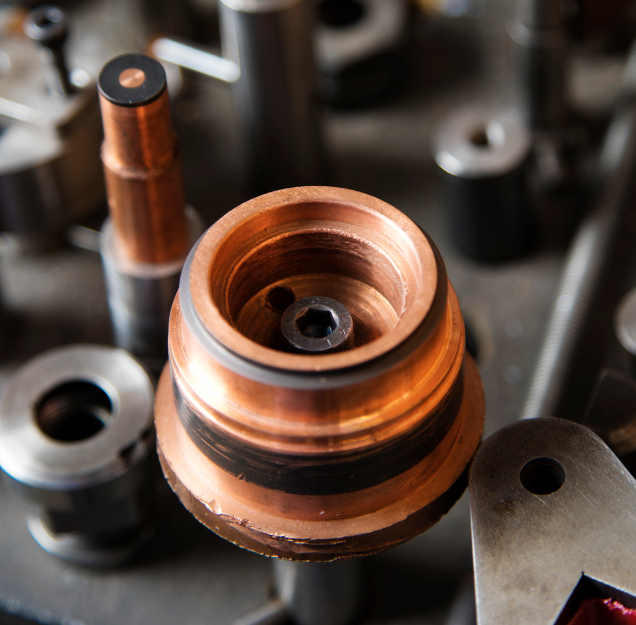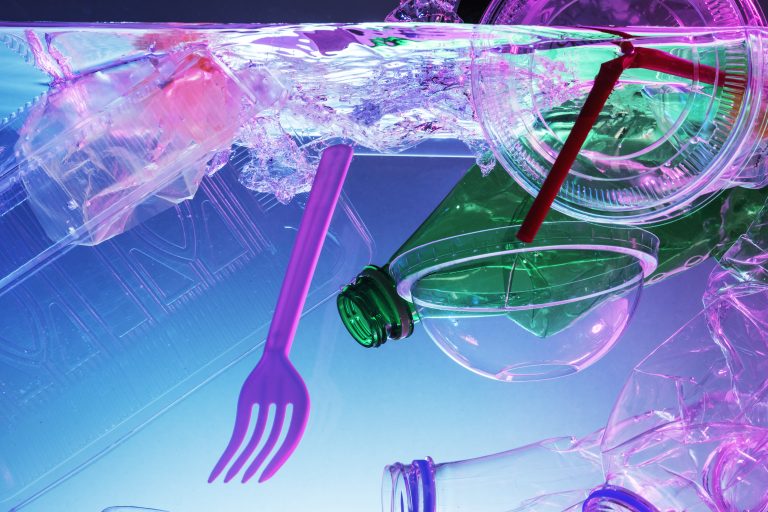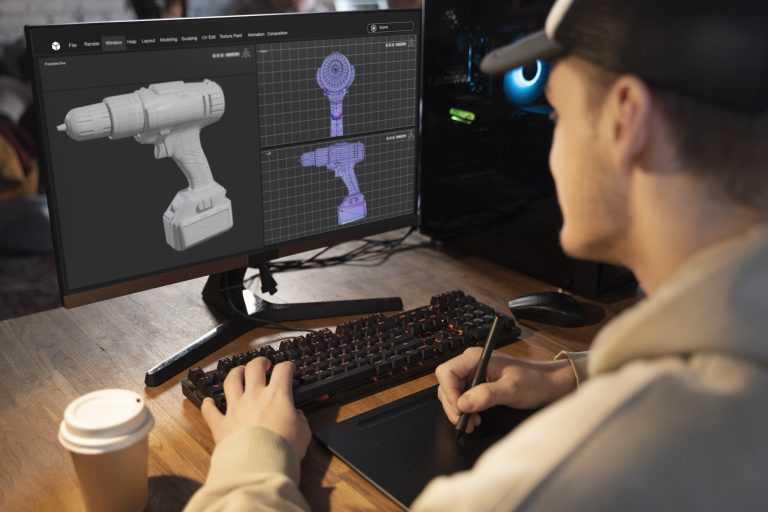Blow moulding plastics is a manufacturing process that uses air blown into a mould cavity to create a hollow component. It is commonly used to make parts for the construction, industrial, automotive, medical and packaging sectors, among others. It works in a similar way to standard plastic injection moulding, using plastic pellets that are softened and pushed into the mould cavity to form the required shape. The difference is the addition of compressed air that forces the plastic outwards and produces the hollowed-out effect.
How Does Blow Moulding Plastics Work?
The blow moulding plastics process begins as softened plastic polymer pellets are heated and formed into a tubular shape. Then, a hole is made in one end of the tube to allow compressed air to pass into the plastic material. Once it is softened and the hole is added, it passes into a specially designed mould and is clamped into place.
This allows the plastic to remain absolutely still as compressed air is blown inside, pushing the sides outwards and creating the hollow, moulded part. After this, the part is cooled and solidified before being ejected from the mould and moved to quality control and shipping out.
The blow moulding process produces thin-walled, hollow plastic containers that can be used for a wide variety of applications. Everyday products, such as storage containers, milk bottles, soft drinks bottles, shampoo and liquid soap dispensers, toys and watering cans can all be manufactured using this versatile process. Blow moulding can also be used to join hollow plastic components together to create more complex products such as drums, tubs, ducting and packaging. You can use a range of polymers in the process, with some common examples including polyvinyl chloride (PVC), polyethene-terephthalate (PET), polyethene and polypropylene.
Different Types of Blow Moulding
The extrusion blow moulding technique uses a softened plastic tube as the basis of the moulded product. This is installed into the blow moulding machine, and the heated plastic melts to fit the contours of the mould cavity. After this stage, compressed air is introduced to hollow out the plastic inside. This is a popular blow moulding process found in around three-quarters of all blow moulded products.
Secondly, injection blow moulding uses a preformed plastic shape to start instead of the softened polymer tube. It is held in place inside the machine by a core metal pin and hollowed out by compressed air. Finally, stretch injection blow moulding works in a similar way to injection blow moulding, but the softened plastic preformed shape is stretched into its final design ahead of compressed air being injected, rather than being held in place by a pin. Stretch injection blow moulding is suitable for processing PVC and PET products due to the individual properties of these two highly versatile plastic materials.
Why Opt for the Blow Moulding Process?
The main benefit to using the blow moulding plastics process in manufacturing projects is the sheer number of products that can be made using any of the three flexible, efficient methods. Plastic food containers can remain hygienic and attractively branded, while shampoo bottles and soap dispensers offer excellent chemical resistance and the ability to form complex shapes. Automotive ducting and industrial tubs and drums provide robust, durable strength for use in heavy industry, construction and other demanding environments. The medical sector prize the manufacturing method for its easy sanitisation properties and lightweight. Put simply, plastic blow moulded products are commonly found in multiple areas of domestic and commercial life.
Another benefit is that extrusion blow molding can create intricate and custom shapes with precise sizes, finishes, and wall thicknesses. For instance, the neck of a bottle needs to fit perfectly with the cap’s grooves to prevent leaks when closed. The final products are typically high-quality, and the costs for making molds and manufacturing are usually lower compared to other plastic manufacturing methods, which is good for saving money.
Disadvantages include the fact that there are limits to how much difference can be made in wall thicknesses due to the fact that the products must be hollowed out yet retain sufficient strength and integrity. Products can also be harder to recycle if thermosetting polymers are used. This is because such materials can only be reshaped once and will no longer be able to be softened or melted for reforming or recycling after that.





